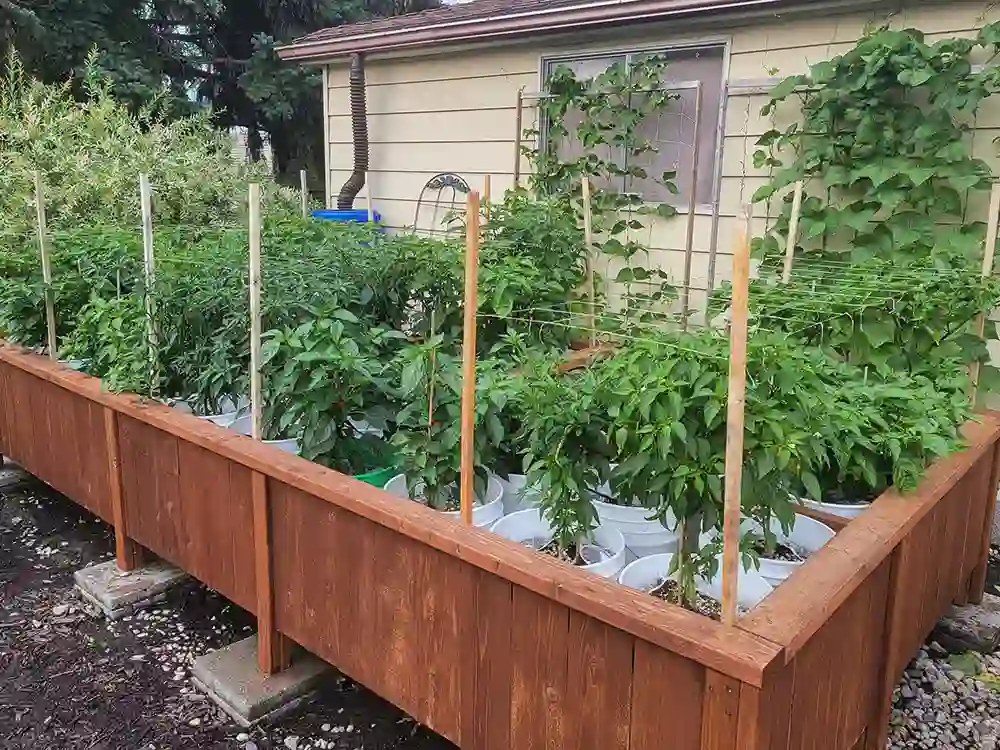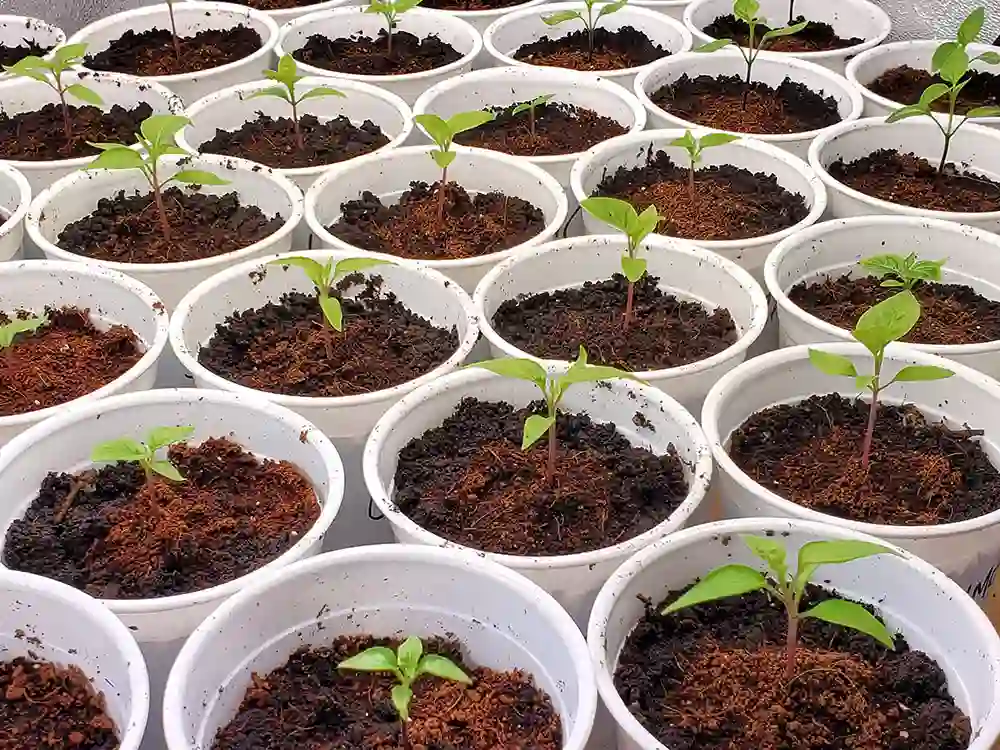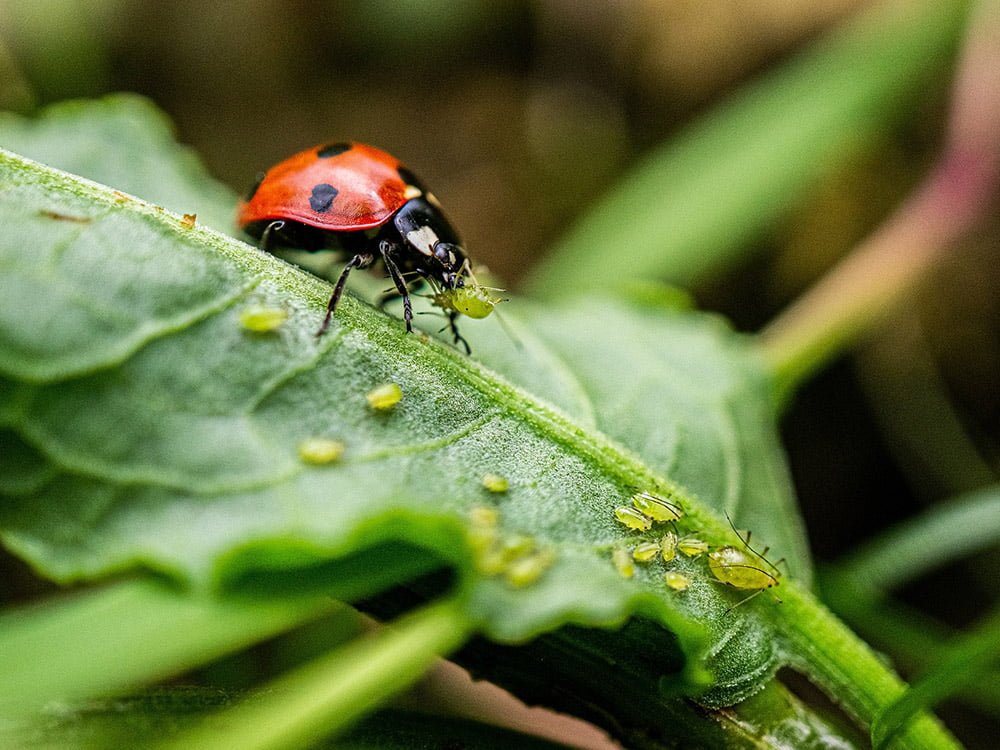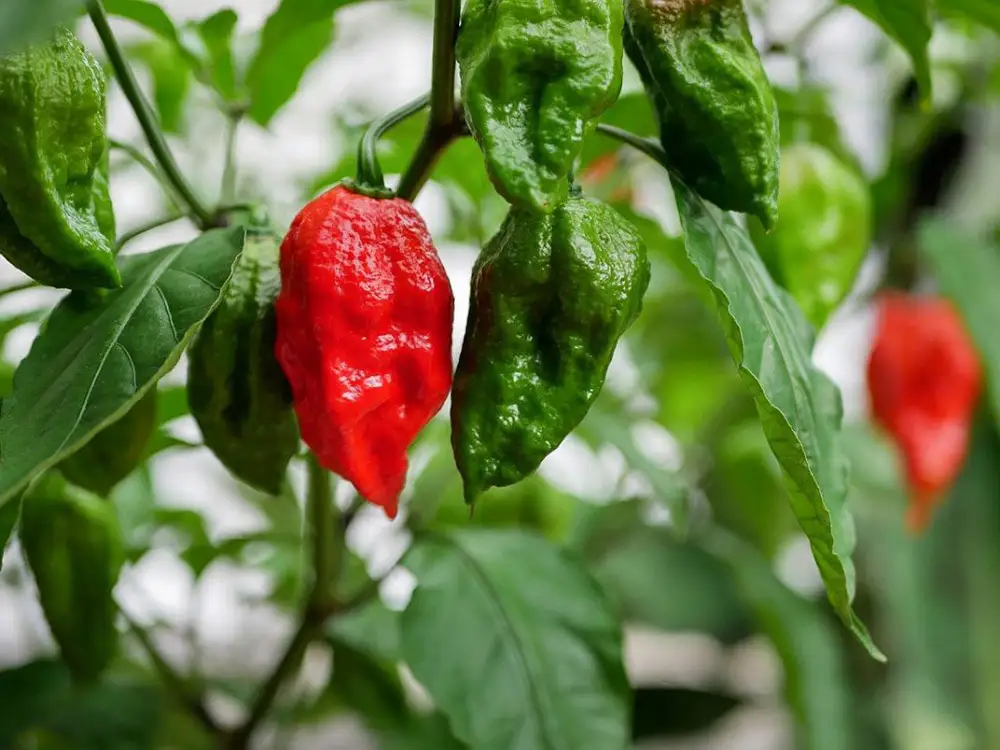Vegetable Gardening
How to Grow Peppers in 5-Gallon Buckets: A Step-by-Step Guide
If you’re looking to grow peppers in 5-gallon buckets, you’ve come to the right place. The great thing about growing peppers in buckets is that it’s perfect for urban gardeners with limited space. Plus, it’s a fun and rewarding way to get your gardening fix!
Urban gardening is an excellent way to grow your own food in the city, even if you don’t have a lot of space. It’s not only an eco-friendly practice, but it’s also a great way to save money on groceries and enjoy fresher, tastier produce.
Growing peppers in 5-gallon buckets is just one of the many ways to create your own little green oasis in the concrete jungle.
With the right technique and a bit of patience, you’ll be amazed at how easy it is to grow peppers in 5-gallon buckets. Plus, you’ll have the satisfaction of knowing that you grew them yourself!
So let’s dive in and learn all about this fun and practical gardening method.
Benefits of Growing Peppers in 5-Gallon Buckets
Space-saving solution
Growing peppers in 5-gallon buckets is a fantastic space-saving solution for urban gardeners. With a little creativity, you can arrange your buckets in a way that maximizes your limited space. You could place them on balconies, patios, or even create a vertical garden by stacking them.
Another great thing about using buckets is that you can easily move them around. This means you can rearrange your garden as needed or even bring your peppers indoors if the weather takes a turn for the worse.
Controlled environment
Growing peppers in buckets also offers a more controlled environment than traditional gardening. This can lead to a higher success rate and a more enjoyable gardening experience overall.
By using a high-quality potting mix and monitoring the moisture levels, you can provide your plants with the perfect conditions for healthy growth.
Be sure and check out our post about the outdoor hydroponic system featuring peppers grown in 5-gallon buckets.
Choosing the Right Pepper Variety for Your Bucket Garden
When choosing a pepper variety, consider factors like growing space, climate, and sunlight, as well as your personal preferences and culinary uses. Remember, you can always grow multiple types of peppers in your 5-gallon buckets, so don’t be afraid to mix and match!
Sweet and Mild peppers
There are so many different types of peppers out there, but let’s start with the sweet and mild varieties.
Our favorite sweet pepper varieties:
- Chervena Chushka – Plants reach about 24″ tall. Peppers are somewhat triangular shaped reaching about 2″ wide and 6″ long
- Heirloom Aconcagua – Plants grow about 36″ tall. Fruit can grow as large as 12″ in length and more than 2″ in diameter.
- Calabrian Calabrese – The 2″ round peppers have a nice smoky flavor with a mild heat level.
- El Rito – Tasty chilis about 4″ in length. Plants are productive and average about 24″ in height.
- Alma Paprika – Round peppers with lobes, about 2-3 inches in diameter. Plants grow about 24″ tall.
Hot peppers
If you’re more into spicy foods, you might want to try growing hot peppers. They can be a fun addition to your garden, but make sure you’re prepared for the heat.
Some of our favorite varieties to grow in 5-gallon buckets:
- Gochugaru – Plants grow about 24-36″ in height. The Korean chilis are about 0.75″ in diameter and up to 4.5″ longs.
- Gong Bao – Plants grow 24″ tall with hordes of 6″ long thin, often spiraling chilis.
- Thai Dragon – Dozens of 2″ long, upward pointing chilis on plants that reach 24″ tall.
- Bird’s Eye – Small compact plants average 18″ tall with loads of tiny 1″ long chilis.
- Golden Cayenne – Bushy plants about 24″ tall that get loaded with the 5″ yellow peppers.

Materials Needed to Grow Peppers in 5-Gallon Buckets
- 5-gallon buckets – First things first, you’ll need some 5-gallon buckets. You can find these at your local hardware store, or you might even be able to score some for free from local businesses or restaurants that no longer need them. Just make sure they’re clean, food safe plastic, and haven’t been used to store any harmful chemicals.
- Quality potting mix – Next, you’ll need a high-quality potting mix to fill your buckets. A well-draining mix that contains peat moss, vermiculite, and perlite is ideal for growing peppers in 5-gallon buckets. This will help to retain moisture while still providing adequate drainage.
- Pepper seedlings or seeds – You can either start your peppers from seed or purchase seedlings from a local nursery. If you’re starting from seed, you’ll need to give yourself a head start by sowing them indoors about 8-10 weeks before transplanting them into your 5-gallon buckets.
- Fertilizer – Pepper plants love a good, balanced water soluble fertilizer. Look for one that’s formulated specifically for vegetables, and follow the manufacturer’s instructions for application rates and frequency.
- Support stakes or cages – Some pepper plants, especially larger varieties, may need some support as they grow. Support stakes or cages will help keep your plants upright and prevent them from becoming too top-heavy.
- Gloves, trowel, and watering can – Finally, you’ll need some basic gardening tools like gloves, a trowel, and a watering can to help you with planting and ongoing care of your pepper plants.
Step-by-Step Guide to Planting Peppers in 5-Gallon Buckets
Preparing the buckets
Before planting your peppers, you’ll need to prepare your buckets by drilling drainage holes in the bottom. Use a 1/4-inch drill bit to create at least ten evenly spaced holes, ensuring that excess water can drain out and prevent root rot.
Preparing the soil and adding fertilizer
Fill your buckets with a high-quality, well-draining potting mix that contains peat moss, vermiculite, and perlite. This will help to retain moisture while still providing adequate drainage, which is crucial for healthy pepper plant growth.
Next, mix in some slow-release fertilizer according to the package instructions. This will provide your pepper plants with the essential nutrients they need to grow strong and healthy. You can also add a layer of compost or aged manure to the top of the soil to provide an additional boost of nutrients.
DIY Bulk Potting Soil Mix
A good mix of potting soil will have plenty of organic matter, a component to help retain moisture, and something to provide drainage and aeration.
Here’s a good ratio, just multiply to your own needs for volume.
- 3 gallons sphagnum moss – retains moisture
- 3 gallons compost – provides nutrients
- 2 gallons perlite – allows proper drainage
Since sphagnum moss can add too much acidity to the soil you should buffer it with an 1/8 cup of dolomite lime to the mix above.
You could also use coconut coir in place of the sphagnum moss. No lime is needed if using coconut coir
Planting pepper seedlings or seeds

When it’s time to plant your peppers, make sure to properly space them in your 5-gallon buckets.
For most pepper varieties, you’ll want to plant only one seedling per bucket to prevent overcrowding and ensure adequate airflow.
If you’re transplanting seedlings, carefully remove them from their original containers, taking care not to damage their roots.
Create a hole in the center of the soil in your bucket, and gently place the seedling inside.
Make sure the soil level on the stem remains the same as it was in the original container.
Firmly press the soil around the seedling to eliminate any air pockets and provide support.
If you’re planting seeds, follow the packet instructions for the proper planting depth and spacing.
Generally, you’ll want to sow 2-3 seeds in the center of the bucket, about 1/4 inch deep, and cover them lightly with soil.
Keep the soil consistently moist, and once the seeds have germinated and grown a few inches tall, thin them to the strongest seedling.
Watering and initial care
After planting your peppers, give the soil a thorough watering to help settle it around the roots and encourage good root-to-soil contact.
Make sure to water deeply, so the moisture reaches the bottom of the bucket, but avoid overwatering, which can lead to root rot.
In the first few weeks after planting, keep an eye on your pepper plants to ensure they’re adapting well to their new environment. Monitor the soil moisture, and water as needed to maintain consistent moisture levels.
Providing support
As your pepper plants grow, they may need some support to help keep them upright and prevent them from becoming too top-heavy.
Install support stakes or cages in your 5-gallon buckets early on, before the plants become too large.
As the plants grow, gently tie them to the stakes or cages using soft twine or plant ties, taking care not to damage the stems.
By following these step-by-step instructions, you’ll be well on your way to successfully growing peppers in 5-gallon buckets.
As your plants grow and develop, remember to provide ongoing care, such as regular watering, fertilizing, and pruning, to ensure a bountiful harvest of delicious homegrown peppers.
Ongoing Care for Pepper Plants in 5-Gallon Buckets
Watering
Proper watering is crucial for growing peppers in 5-gallon buckets. Aim to keep the soil consistently moist but not soggy.
Watering frequency will depend on factors like the weather and the size of your plants, so check the soil regularly and adjust your watering schedule as needed.
Fertilizing
To keep your pepper plants healthy and productive, it’s essential to fertilize them regularly. Follow the manufacturer’s instructions for your chosen fertilizer.
Be careful not to over-fertilize, as this can cause nutrient lockout and lead to problems like blossom end rot and reduced fruit production.
Slow-Release Nutrients
While mixing everything it would also be an ideal time to add some slow-release nutrients to the soil. Mix each of the following to the above mix.
- 1/4 cup bone meal
- 1/4 cup blood meal
- 1/2 cup greensand
The slow-release nutrients will be released as they decompose in the soil. You will also need to provide a water-soluble fertilizer periodically throughout the grow season as well.
Pruning
Pruning your pepper plants can help to encourage bushier growth and increase fruit production. Remove any damaged or diseased leaves as you notice them, and consider pinching back the growing tips of your plants to encourage branching.
Pest and disease management

Growing peppers in 5-gallon buckets can help to reduce the risk of pests and diseases, but it’s still important to keep an eye out for any potential issues.
Here’s a table of common pests and diseases that can affect pepper plants:
| Pest/Disease | Symptoms |
|---|---|
| Aphids | Small, soft-bodied insects on leaves and stems; distorted, yellow leaves |
| Spider mites | Tiny, spider-like mites on undersides of leaves; yellowing, curling leaves, and webbing |
| Whiteflies | Tiny, white, flying insects on undersides of leaves; yellowing leaves and sticky honeydew |
| Leaf miners | Winding, white trails on leaves; leaf damage |
| Blossom end rot | Dark, sunken spots on the blossom end of fruits |
| Powdery mildew | White, powdery substance on leaves and stems |
| Bacterial leaf spot | Small, water-soaked spots on leaves; spots may turn brown and leaves may drop |
Grow Bags: A Flexible Alternative to 5-Gallon Buckets
If you’re looking for a more flexible and lightweight option for growing peppers, consider using grow bags instead of 5-gallon buckets. These fabric containers come in various sizes, including 5-gallon equivalents, and offer some unique advantages over traditional plastic buckets.
- Improved root growth and aeration – Grow bags are made from breathable fabric, which allows for better air circulation around the roots of your plants. The porous material of grow bags helps to prevent root circling, as the roots naturally air-prune when they reach the edges of the bag.
- Easy storage and portability – Grow bags are incredibly lightweight and easy to move, making them an ideal choice for urban gardeners with limited space. Plus, they’re collapsible and can be easily stored when not in use, taking up minimal space in your home or garden shed.
- Efficient drainage – The fabric material of grow bags allows for excellent drainage, reducing the risk of overwatering and root rot. However, this also means you may need to water your plants more frequently, as the soil can dry out faster than in plastic buckets.
- Sturdy Fabric Material: Made of 300g of thickened nonwoven fabric, these pots are moderately permeable, and BPA-free
Harvesting and Enjoying Your Homegrown Peppers
Signs of ripeness
As your pepper plants start to produce fruit, you’ll need to know when it’s time to harvest. Most peppers will change color as they ripen, and their skin will become shiny and slightly wrinkled.
For the best flavor, wait until your peppers have reached their full color before harvesting.
Harvesting technique
To harvest your peppers, use a sharp pair of scissors or pruning shears to cut the stem about an inch above the fruit. Be gentle when handling your peppers, as they can be delicate and easily bruised.
Storing and preserving peppers
Once you’ve harvested your peppers, you can store them in the refrigerator for up to two weeks. If you harvest more than you can use right away, consider preserving by freezing, pickling, or dehydrating peppers.
Culinary uses
Now that you’ve successfully grown peppers in 5-gallon buckets, it’s time to enjoy your harvest! Peppers are incredibly versatile and can be used in a wide variety of dishes.
Try using your sweet peppers in salads, stir-fries, or stuffed with your favorite filling.
For hot peppers, add them to salsas, sauces, or use them to spice up your favorite recipes. The possibilities are endless, so get creative in the kitchen and enjoy the fruits of your labor!
Final Thoughts
Growing peppers in 5-gallon buckets is a fun and rewarding way to make the most of your limited urban gardening space. With the right care and attention, you can enjoy a bountiful harvest of delicious homegrown peppers.
So why not give it a try? You might just be surprised at how easy it is to grow peppers in 5-gallon buckets, and you’ll love the satisfaction of knowing that you grew them yourself. Happy gardening!
FAQ: Grow Peppers in 5-Gallon Buckets
Do peppers grow well in 5-gallon buckets?
Yes, peppers grow well in 5-gallon buckets as they provide ample space for root development and can be easily moved to receive optimal sunlight and temperature conditions.
Can I plant 2 bell pepper plants in a 5-gallon bucket?
It’s best to plant only one bell pepper plant per 5-gallon bucket to ensure proper spacing and avoid competition for nutrients, water, and sunlight.
What is the best size bucket to grow pepper plants in?
A 5-gallon bucket is ideal for most pepper varieties, providing enough room for root growth and proper soil volume for nutrients and moisture retention.
How deep do containers need to be for peppers?
Containers for peppers should be at least 12-14 inches deep to accommodate the root system and allow for sufficient soil volume.
What is the best potting mix for peppers in containers?
The best potting mix for peppers in containers is a well-draining mix that includes compost, peat moss (or coconut coir), vermiculite, and perlite, which provides a good balance of nutrients, aeration, and moisture retention.







